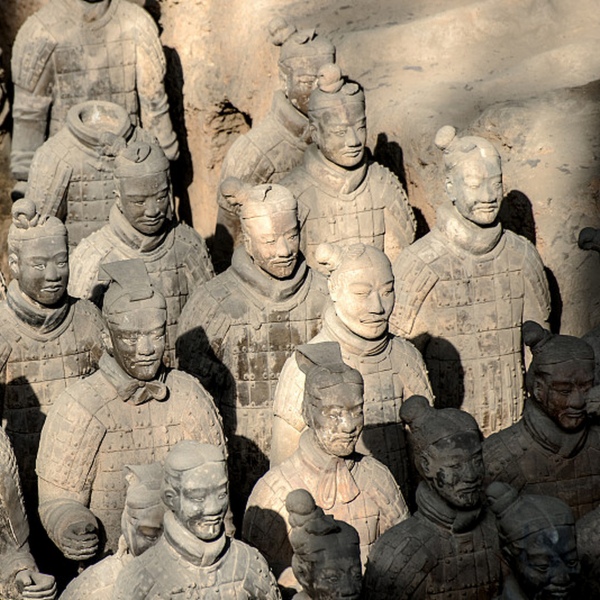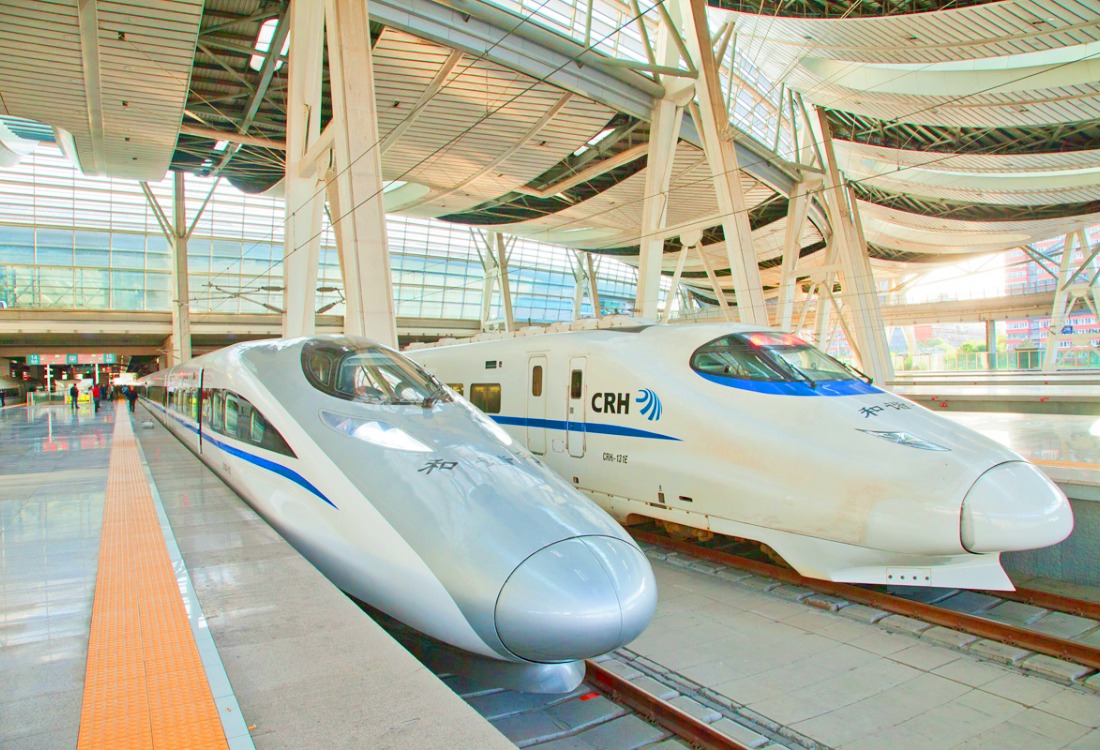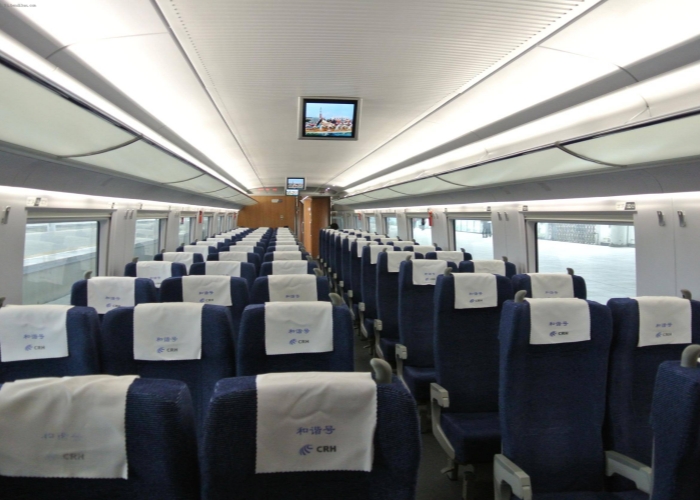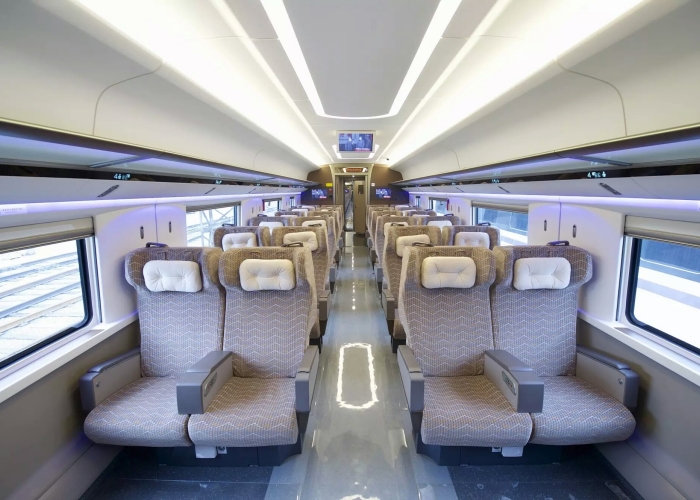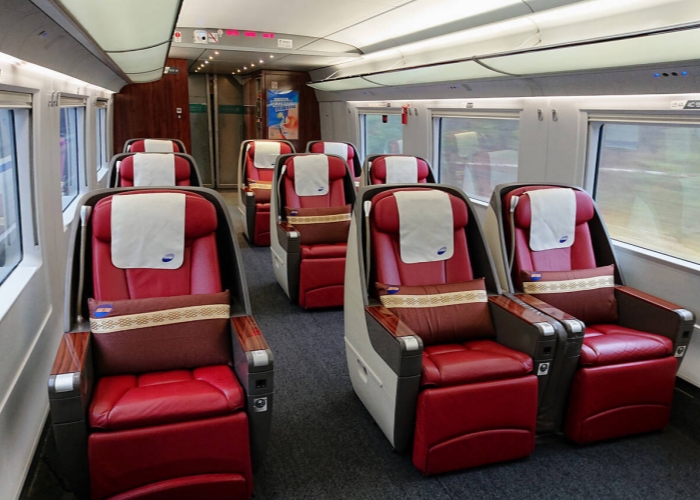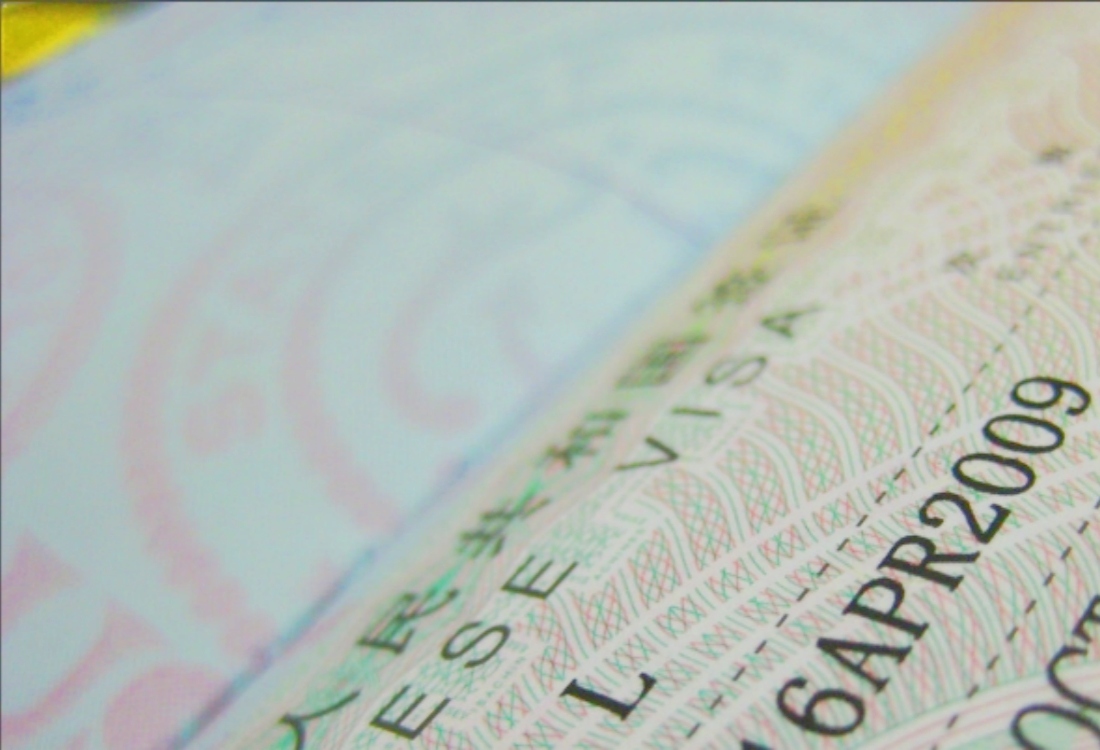Table of Contents
ToggleChina boasts the largest and most advanced high-speed rail network in the world, with trains that reach speeds of 250-350 km/h (155-217 mph). Whether you’re traveling between major cities like Beijing, Shanghai, or Guangzhou, or exploring scenic destinations like Xi’an, Chengdu, and Guilin, the high-speed train (known as Gaotie, 高铁) offers a fast, comfortable, and efficient way to travel.
Seats Classes of High-Speed Train in China
There are three main classes available:
- Second Class: The most affordable option, with comfortable 3+2 seating arrangements. Ideal for budget travelers.
- First Class: Offers more space with a 2+2 seating arrangement, wider reclining seats, and quieter cabins.
- Business Class: The most luxurious, with fully reclining leather seats, more legroom, and complimentary meals and drinks.
- Sleeper Options: For overnight journeys, some trains offer soft sleeper and hard sleeper berths. On high-speed trains, these are modern, comfortable compartments. Deluxe soft sleepers offer the highest privacy and comfort for overnight travel.
How to Book China High-Speed Train Tickets?
- Official Booking Platforms: China Railway 12306 (www.12306.cn) – The official website and mobile app (requires Chinese payment methods).
- Travel Agencies: Third-party websites offer English booking services with payment options like PayPal or international credit cards.
- Train Stations: Tickets can also be purchased at station counters or ticket vending machines, but availability may be limited during peak seasons.
Key High-Speed Train Booking Tips:
- Book early – Tickets are available 15 days in advance online (60 days for group bookings).
- Use your passport – Foreigners must provide a valid passport when booking and collecting tickets.
- Pick up tickets in advance – If booked online, collect your ticket at the station’s manual counter before departure.
Where Can You Travel by High-Speed Train?
China’s high-speed rail network covers over 42,000 km (26,000 miles), connecting more than 80% of major cities.
Popular High-Speed Train Routes in China
- Beijing – Shanghai (about 5 hours): The busiest route, offering frequent daily departures.
- Shanghai – Hangzhou (about 1 hour): Perfect for a day trip to the scenic West Lake.
- Guangzhou – Shenzhen (about 2 hours) – Hong Kong (about 30 minutes): A seamless way to travel between Guangdong and Hong Kong.
- Beijing – Xi’an (about 6 hours): An efficient way to see the Terracotta Warriors.
- Chengdu – Chongqing (about 1.5 hours): Ideal for those exploring Chengdu cuisine and the Three Gorges region.
Bullet trains are more punctual and faster than flights for distances under 1,200 km (750 miles) due to minimal check-in and security procedures.
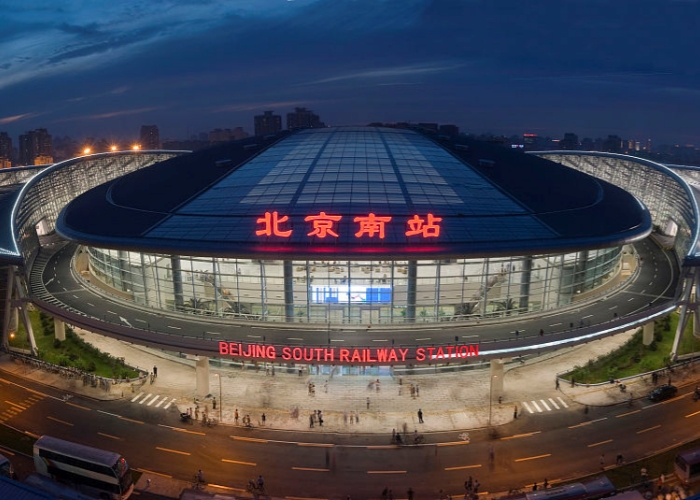
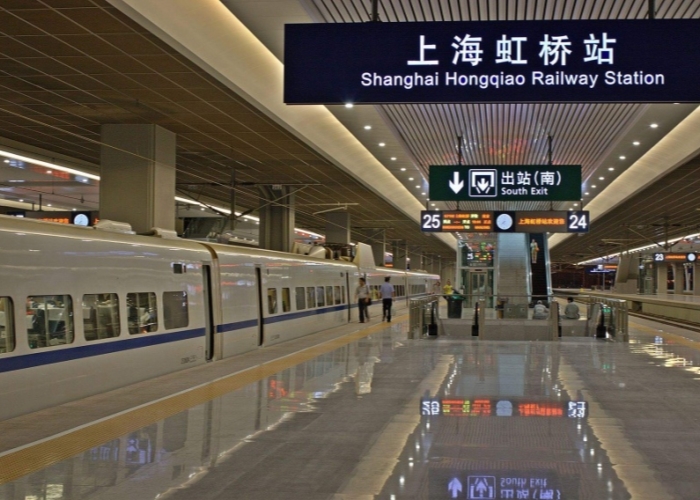

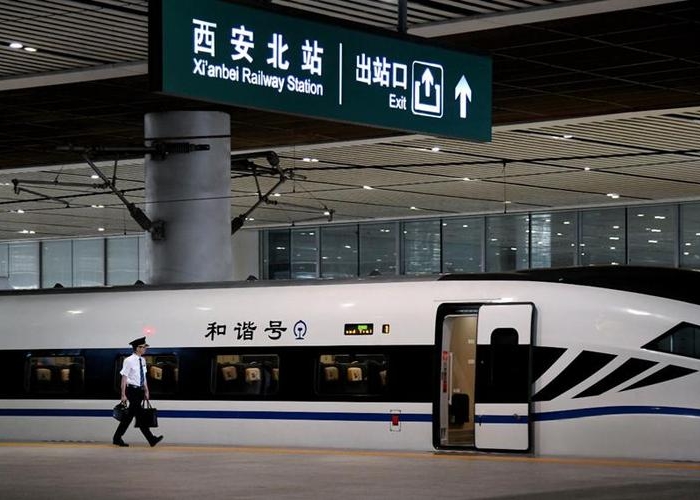
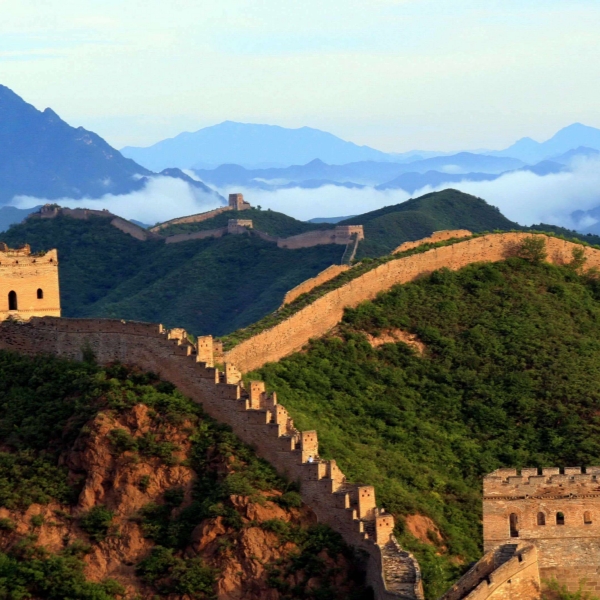
13 Days China Top City Tour : Beijing Xian Zhangjiajie Guilin Shanghai
Onboard Services: What to Expect During Your Journey in China?
China’s high-speed trains offer a clean, modern, and comfortable experience with various amenities onboard.
Seating & Comfort of China High-speed Train
- Spacious cabins with reclining seats.
- Foldable trays, charging ports, and adjustable headrests.
- Overhead luggage racks and under-seat storage for suitcases.
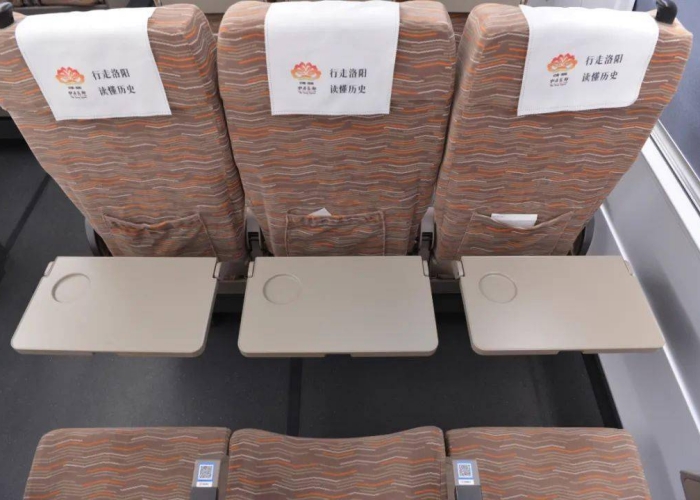
Food & Drinks on the China High-speed Train
- Snack trolleys selling boxed meals, instant noodles, drinks, and snacks. Dining car with hot meals, coffee, and Chinese dishes.
- BYO food is allowed – Many passengers bring their own snacks or purchase meals from station vendors before boarding
Entertainment & Wi-Fi
- Some high-speed trains offer free Wi-Fi, but a Chinese phone number may be required for login. Seatback screens (Business Class) provide news, travel updates, and movies.
- Bring your own entertainment, as options may be limited.
Restrooms & Cleanliness
-
- Baby changing tables available in some restrooms.
Luggage Policy of China High-speed Train
-
- Large suitcases can be stored in overhead racks or designated storage areas.
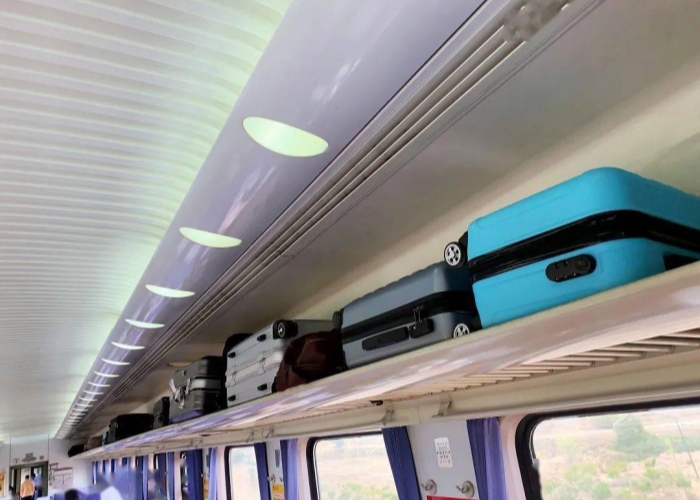

High-speed Train Tips for a Smooth Journey in China
- Arrive Early: Be at the station at least 40 minutes before departure, as high-speed train stations have airport-like security checks.
- Keep Your Passport Handy: It is required for ticket collection and identity verification at boarding gates.
- Check Your Departure Station: Cities like Beijing, Shanghai, and Guangzhou have multiple train stations – make sure you go to the correct one!
- Use Translation Apps: Many signs are in English, but train staff may have limited English proficiency. Use apps like Google Translate or Pleco for assistance.
- Board Efficiently: Trains stop for only 2-5 minutes at each station. Be ready to board when the doors open.
- Avoid Peak Seasons: Chinese New Year (January-February), National Day (October 1-7), and summer holidays (July-August) see a surge in travelers. Book in advance and travel during off-peak hours.
Frequently Asked Questions (FAQs)
What documents do I need to travel on a China high-speed train?
Your valid passport is essential. It’s used for booking your ticket, entering the train station, passing security, and boarding the train. Your e-ticket is linked to your passport number.
Can I change or cancel my China high-speed train ticket?
Yes, tickets can usually be changed or cancelled, often with a small fee, depending on how far in advance you make the request. This can typically be done online through the platform you booked with or at the train station ticket counter. Policies vary, so check at the time of booking.
Is English spoken at train stations and on board?
Signage in major train stations usually includes English. Announcements on China high-speed train services are often made in both Mandarin and English. While not all staff members may speak fluent English, they are generally helpful, and translation apps can bridge any communication gap. Station staff at information desks or designated windows for foreigners are more likely to speak some English.
How much luggage can I bring on a China high-speed train?
Generally, each adult passenger can carry up to 20kg (44 lbs) of luggage for free. Children can carry up to 10kg (22 lbs). Ensure your luggage fits in overhead racks or designated storage areas without obstructing aisles.
Are there power outlets and Wi-Fi on China high-speed trains?
Yes, most China high-speed train seats (First and Business Class) or seat groups (Second Class) have access to power outlets. Complimentary Wi-Fi is also increasingly common, though connection quality can vary depending on the route and location.
